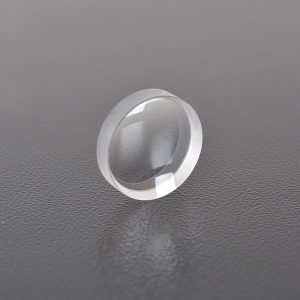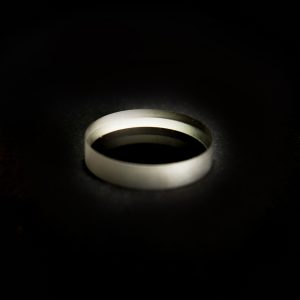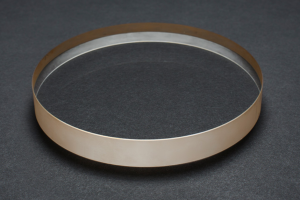
Roof Pentaprism: A Precision Tool in the Optical World
From SLR camera framing to laser precision positioning, the roof pentaprism achieves zero image distortion in 90-degree deflection of light with total internal reflection and precision roof structure. This precision component forged from optical glass is not only a bridge for photographers to capture the real world, but also a guarantee for the accuracy of laser rangefinders. In the future, it will promote the innovation of high-precision optical systems.
In the field of optics, prism is a common optical element used to change the propagation direction of light, split light, combine light or form an image. Among them, the roof pentaprism is a special type of prism. Due to its unique structure and function, it is widely used in photography, measuring instruments, laser technology and other fields. This article will introduce in detail the principle, structure, application and importance of the roof pentaprism in optical systems.
1. The basic principle of the roof pentaprism
The roof pentaprism is a variant of the pentaprism. Its core function is to deflect the incident light by 90 degrees while keeping the image upright and not reversed from left to right. Unlike ordinary pentaprisms, the roof semi-pentaprism adds a “ridge” structure to one of the reflection surfaces, that is, two mutually perpendicular reflection surfaces forming a 90-degree angle. This design allows the light to not only deflect 90 degrees when passing through the prism, but also keep the left and right directions of the image unchanged.
The working principle of the roof semi-pentaprism is based on total internal reflection (TIR). When the light enters the prism, it will undergo total internal reflection on the two reflection surfaces and finally emit at an angle of 90 degrees. Due to the existence of the ridge structure, the light is divided into two parts on the second reflection surface, passing through two perpendicular reflection surfaces respectively, and finally re-merged, thereby keeping the left and right directions of the image unchanged.
2. The structure of the roof semi-pentaprism
The roof semi-pentaprism is usually made of high-quality optical glass, such as BK7 or fused quartz, to ensure high transmittance and low scattering. Its structure includes the following key parts:
1. Incident surface: The light first enters the prism through the incident surface.
2. Reflection surface: The light undergoes total internal reflection on the first reflection surface and deflects at a certain angle.
3. Ridge surface: The ridge surface consists of two mutually perpendicular reflection surfaces, where the light is divided into two parts, which are reflected separately and then merged.
4. Exit surface: The light finally leaves the prism through the exit surface, forming a 90-degree deflection.
The manufacturing process of the ridge semi-penta prism is extremely demanding, especially the processing accuracy of the ridge surface. It must ensure that the two reflection surfaces are strictly perpendicular, otherwise it will cause image distortion or optical path deviation.
3. Application of ridge semi-penta prism
The ridge semi-penta prism is widely used in many fields due to its unique optical properties:
1. Photography and videography: In SLR cameras, the ridge semi-penta prism is the core component of the viewfinder. It can deflect the light captured by the lens by 90 degrees, allowing the photographer to see an upright and non-inverted image through the viewfinder.
2. Measuring instruments: In laser rangefinders, theodolites and other measuring equipment, the ridge half pentaprism is used to accurately control the optical path to ensure the accuracy of the measurement results.
3. Laser technology: In laser systems, the ridge half pentaprism is used to adjust the direction of the laser beam to ensure that the laser can accurately illuminate the target position.
4. Optical experiments: In optical laboratories, the ridge half pentaprism is often used in optical path design to help researchers realize complex optical experiments.
4. Advantages and challenges of the ridge half pentaprism
The main advantage of the ridge half pentaprism is that it can keep the image upright and not reversed left and right, while achieving precise deflection of light. This makes it irreplaceable in occasions that require high-precision optical path control.
However, the manufacture and debugging of the ridge half pentaprism also face some challenges. First, the processing accuracy of the ridge surface is extremely high, and any slight deviation will cause optical path offset or image distortion. Secondly, the material selection of the prism is also very important. Optical glass with low scattering and high light transmittance must be used to ensure the transmission efficiency of light.
V. Future Development Trends
With the continuous advancement of optical technology, the application field of the roof semi-penta prism will be further expanded. In the future, with the improvement of manufacturing technology, the accuracy and performance of the roof semi-penta prism will be further improved, especially in the field of high-precision measurement and laser technology. In addition, with the application of new materials and new processes, the cost of the roof semi-penta prism is also expected to decrease, making it popular in more fields.
Conclusion
As an important component in the optical system, the roof semi-penta prism plays a key role in photography, measurement, laser technology and other fields with its unique optical properties. Although its manufacturing and debugging process is complicated, with the advancement of technology, the application prospects of the roof semi-penta prism will be broader. For optical engineers and researchers, a deep understanding of the principles and applications of the roof semi-penta prism will help design more efficient and precise optical systems.
Hanzhong Brisun Optics Co., Ltd. Is the high precision optical element manufacturer provides customized production of Various optical lenses, including spherical lens, cylindrical lens, optical window, mirror, prism, filter, metal base mirror and other high-precision optical elements. The base materials include various optical glass, fused quartz, calcium fluoride (CaF2), zinc selenide (ZnSe), germanium (GE), silicon (SI), sapphire, metal and other materials. And provide antireflective film, high reflection film, spectroscopic film, metal film and other optical coatings.
Welcome to OEM and Purchasing!


